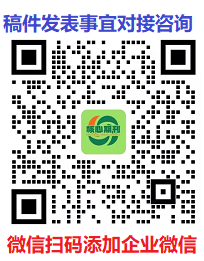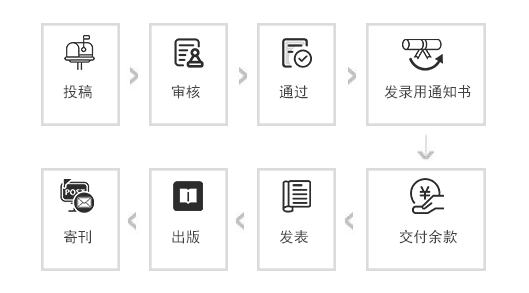IET Nanobiotechnology



- 中国知网数据库(CNKI)全文收录期刊
- 中国核心期刊(遴选)数据库收录期刊
- 中国万方数据库全文收录期刊
- 中国维普科技期刊数据库收录期刊
- 中国龙源数据库全文收录期刊
- 中国期刊网全文收录期刊



中国高校科技期刊研究会第9次会员代表大会在北京召开,中宣部出版局副局长张怀海、教育部科学技术与信息化司一级巡视员张国辉等领导出席会议并发表..
英文简介:Electrical and electronic engineers have a long and illustrious history of contributing new theories and technologies to the biomedical sciences. This includes the cable theory for understanding the transmission of electrical signals in nerve axons and muscle fibres; dielectric techniques that advanced the understanding of cell membrane structures and membrane ion channels; electron and atomic force microscopy for investigating cells at the molecular level.Other engineering disciplines, along with contributions from the biological, chemical, materials and physical sciences, continue to provide groundbreaking contributions to this subject at the molecular and submolecular level. Our subject now extends from single molecule measurements using scanning probe techniques, through to interactions between cells and microstructures, micro- and nano-fluidics, and aspects of lab-on-chip technologies. The primary aim of IET Nanobiotechnology is to provide a vital resource for academic and industrial researchers operating in this exciting cross-disciplinary activity. We can only achieve this by publishing cutting edge research papers and expert review articles from the international engineering and scientific community. To attract such contributions we will exercise a commitment to our authors by ensuring that their manuscripts receive rapid constructive peer opinions and feedback across interdisciplinary boundaries.IET Nanobiotechnology covers all aspects of research and emerging technologies including, but not limited to:Fundamental theories and concepts applied to biomedical-related devices and methods at the micro- and nano-scale (including methods that employ electrokinetic, electrohydrodynamic, and optical trapping techniques)Micromachining and microfabrication tools and techniques applied to the top-down approach to nanobiotechnologyNanomachining and nanofabrication tools and techniques directed towards biomedical and biotechnological applications (e.g. applications of atomic force microscopy, scanning probe microscopy and related tools)Colloid chemistry applied to nanobiotechnology (e.g. cosmetics, suntan lotions, bio-active nanoparticles)Biosynthesis (also known as green synthesis) of nanoparticles; to be considered for publication, research papers in this area must be directed principally towards biomedical research and especially if they encompass in vivo models or proofs of concept. We welcome papers that are application-orientated or offer new concepts of substantial biomedical importanceTechniques for probing cell physiology, cell adhesion sites and cell-cell communicationMolecular self-assembly, including concepts of supramolecular chemistry, molecular recognition, and DNA nanotechnologySocietal issues such as health and the environmentSpecial issues. Call for papers:Smart Nanobiosensors for Next-generation Biomedical Applications - https://digital-library.theiet.org/files/IET_NBT_CFP_SNNBA.pdfSelected extended papers from the International conference of the 19th Asian BioCeramic Symposium - https://digital-library.theiet.org/files/IET_NBT_CFP_ABS.pdf中文简介:(来自Google、百度翻译)电气和电子工程师在为生物医学科学贡献新理论和技术方面有着悠久而杰出的历史。这包括电缆理论,用于理解神经轴突和肌肉纤维中电信号的传输; 介电技术,促进对细胞膜结构和膜离子通道的理解; 电子和原子力显微镜,用于在分子水平上研究细胞。 其他工程学科,除了生物,化学,材料和物理科学的贡献外,还将继续在分子和亚分子水平为该主题提供开创性的贡献。现在,我们的主题从使用扫描探针技术的单分子测量扩展到细胞与微结构之间的相互作用,微流体和纳米流体学以及芯片实验室技术的各个方面。IET纳米生物技术的主要目标是为从事这一令人兴奋的跨学科活动的学术和工业研究人员提供重要资源。我们只能通过发表国际工程和科学界的前沿研究论文和专家评论文章来实现这一目标。为了吸引这样的贡献,我们将通过确保他们的手稿获得跨跨学科的快速建设性的同行意见和反馈来对我们的作者做出承诺。IET纳米生物技术涵盖研究和新兴技术的所有方面,包括但不限于: 基本理论和概念应用于微观和纳米级的生物医学相关设备和方法 (包括采用电动,电动,电动,和光学捕获技术) 微加工和微制造工具和技术应用于纳米生物技术的自上而下的方法 针对生物医学和生物技术应用的纳米加工和纳米制造工具和技术 (例如,原子力显微镜的应用,扫描探针显微镜和相关工具) 胶体化学应用于纳米生物技术 (例如化妆品,防晒霜,生物活性纳米颗粒) 纳米颗粒的生物合成 (也称为绿色合成); 要考虑出版,该领域的研究论文必须主要针对生物医学研究,尤其是如果它们包含体内模型或概念证明。我们欢迎以应用为导向或提供具有重要生物医学意义的新概念的论文 用于探测细胞生理学,细胞粘附位点和细胞-细胞通讯的技术 分子自组装,包括超分子化学,分子识别,和DNA纳米技术 社会问题,例如健康和环境 特殊问题。征集论文: 用于下一代生物医学应用的智能纳米生物传感器-https:// digital-library.theiet.org/files/IET_NBT_CFP_SNNBA.pdf 第19届亚洲生物陶瓷研讨会国际会议的部分扩展论文-https:// digital-library.theiet.org/files/IET_NBT_CFP_ABS.pdf










英文简介:Electrical and electronic engineers have a long and illustrious history of contributing new theories and technologies to the biomedical sciences. This includes the cable theory for understanding the transmission of electrical signals in nerve axons and muscle fibres; dielectric techniques that advanced the understanding of cell membrane structures and membrane ion channels; electron and atomic force microscopy for investigating cells at the molecular level.Other engineering disciplines, along with contributions from the biological, chemical, materials and physical sciences, continue to provide groundbreaking contributions to this subject at the molecular and submolecular level. Our subject now extends from single molecule measurements using scanning probe techniques, through to interactions between cells and microstructures, micro- and nano-fluidics, and aspects of lab-on-chip technologies. The primary aim of IET Nanobiotechnology is to provide a vital resource for academic and industrial researchers operating in this exciting cross-disciplinary activity. We can only achieve this by publishing cutting edge research papers and expert review articles from the international engineering and scientific community. To attract such contributions we will exercise a commitment to our authors by ensuring that their manuscripts receive rapid constructive peer opinions and feedback across interdisciplinary boundaries.IET Nanobiotechnology covers all aspects of research and emerging technologies including, but not limited to:Fundamental theories and concepts applied to biomedical-related devices and methods at the micro- and nano-scale (including methods that employ electrokinetic, electrohydrodynamic, and optical trapping techniques)Micromachining and microfabrication tools and techniques applied to the top-down approach to nanobiotechnologyNanomachining and nanofabrication tools and techniques directed towards biomedical and biotechnological applications (e.g. applications of atomic force microscopy, scanning probe microscopy and related tools)Colloid chemistry applied to nanobiotechnology (e.g. cosmetics, suntan lotions, bio-active nanoparticles)Biosynthesis (also known as green synthesis) of nanoparticles; to be considered for publication, research papers in this area must be directed principally towards biomedical research and especially if they encompass in vivo models or proofs of concept. We welcome papers that are application-orientated or offer new concepts of substantial biomedical importanceTechniques for probing cell physiology, cell adhesion sites and cell-cell communicationMolecular self-assembly, including concepts of supramolecular chemistry, molecular recognition, and DNA nanotechnologySocietal issues such as health and the environmentSpecial issues. Call for papers:Smart Nanobiosensors for Next-generation Biomedical Applications - https://digital-library.theiet.org/files/IET_NBT_CFP_SNNBA.pdfSelected extended papers from the International conference of the 19th Asian BioCeramic Symposium - https://digital-library.theiet.org/files/IET_NBT_CFP_ABS.pdf中文简介:(来自Google、百度翻译)电气和电子工程师在为生物医学科学贡献新理论和技术方面有着悠久而杰出的历史。这包括电缆理论,用于理解神经轴突和肌肉纤维中电信号的传输; 介电技术,促进对细胞膜结构和膜离子通道的理解; 电子和原子力显微镜,用于在分子水平上研究细胞。 其他工程学科,除了生物,化学,材料和物理科学的贡献外,还将继续在分子和亚分子水平为该主题提供开创性的贡献。现在,我们的主题从使用扫描探针技术的单分子测量扩展到细胞与微结构之间的相互作用,微流体和纳米流体学以及芯片实验室技术的各个方面。IET纳米生物技术的主要目标是为从事这一令人兴奋的跨学科活动的学术和工业研究人员提供重要资源。我们只能通过发表国际工程和科学界的前沿研究论文和专家评论文章来实现这一目标。为了吸引这样的贡献,我们将通过确保他们的手稿获得跨跨学科的快速建设性的同行意见和反馈来对我们的作者做出承诺。IET纳米生物技术涵盖研究和新兴技术的所有方面,包括但不限于: 基本理论和概念应用于微观和纳米级的生物医学相关设备和方法 (包括采用电动,电动,电动,和光学捕获技术) 微加工和微制造工具和技术应用于纳米生物技术的自上而下的方法 针对生物医学和生物技术应用的纳米加工和纳米制造工具和技术 (例如,原子力显微镜的应用,扫描探针显微镜和相关工具) 胶体化学应用于纳米生物技术 (例如化妆品,防晒霜,生物活性纳米颗粒) 纳米颗粒的生物合成 (也称为绿色合成); 要考虑出版,该领域的研究论文必须主要针对生物医学研究,尤其是如果它们包含体内模型或概念证明。我们欢迎以应用为导向或提供具有重要生物医学意义的新概念的论文 用于探测细胞生理学,细胞粘附位点和细胞-细胞通讯的技术 分子自组装,包括超分子化学,分子识别,和DNA纳米技术 社会问题,例如健康和环境 特殊问题。征集论文: 用于下一代生物医学应用的智能纳米生物传感器-https:// digital-library.theiet.org/files/IET_NBT_CFP_SNNBA.pdf 第19届亚洲生物陶瓷研讨会国际会议的部分扩展论文-https:// digital-library.theiet.org/files/IET_NBT_CFP_ABS.pdf
来稿要求:
论点新颖、论证严密、论据充足、文字精练。论文字数:5000字符-8000字符为宜,图表也要计算在内,不包括英文摘要关键词。
标 题:
文章标题要言简意赅,30字以内。作者署名:署真实姓名,注明作者单位、单位所在省市和邮政编码。摘 要:要用第三人称概括全文,300字以内。
关 键 词:
用3~8个关键词术语反映论文主题。专用符号:名词、术语、数字、计量单位、标点符号和数学符号等,必须符合国家标准;外文人名、地名和术语需译成中文。
图表格式:
文中插图与表格放在相应正文之后,分别按出现顺序用图1、图2或表1、表2统一编号。插图应为黑白色,其序号、标题及注释居中放在图的下方,表格的序号及标题置于表格上方,表注放在表格的下方(建议:由于篇幅限制,除核心期刊外尽量不用或少用图表)。
正文注释:
采用尾注形式,注释号①,②,③等标在相应正文右上角。
章节体例:
章节标题为:一级标题不编号,用黑体居中排,二级标题不编号,用楷体放在相应的文字段首与正文空一字格接排正文。 三级标题分别用1.2.3.顺序编号。文中接排标题用(1),(2)编号。
参考文献:
参考文献置于正文之后,近5年的不少于3条,用[1],[2]……顺序编号,如文章中有内容需要解释请用尾注形式。参考文献不全者不能进入审稿阶段。{参考文献格式如下:(1)图书:作者.书名(版本)[M].出版所在地: 出版社,出版年:(1)页码.
(2)期刊:作者.题目[J].期刊名,年,卷(期):页码.
(3)电子参考文献:作者.题目[OL].(文章的发表日期).[本文引用日期].作者简介:来稿者请附个人简介,内容包括姓名(出生年—),性别,籍贯,民族,学历,工作单位,职称,研究方向,通讯地址,联系电话及电子信箱。
一般情况下,您将在3个工作日内收到审稿结果。如文章有很强的时效性,请说明需要最晚刊发时间。
| 论文编号 | 作者姓名 | 论文题目 | 录用情况 |
|---|---|---|---|
| TG251-13579 | 韩丽炘 孟涛 温娟娟 刘晓琴 | 基于互联网的CBL+TBL教学法在病理学实验教学中的应用 | 已录用 |
| TG251-13681 | 邹隆强 杨清余 钟鸿路 李正南 陈 | 医学运动康复联合消肿止痛方治疗急性踝关节扭伤临床研究 | 已录用 |
| TG251-13794 | 林雨慧 陈霄雯 郑颖彦 朱永凯 贾 | 基于SWOT模型的儿童专科医院临床研究发展策略分析 | 已录用 |
| TG251-13762 | 郑鸿雁 | 重复经颅磁刺激治疗肝脾不调型功能性肛门直肠痛的临床研究 | 已录用 |
| TG251-13891 | 袁召1 赵会谢2 赵海深3 | 真武汤治疗阳虚水泛型慢性心力衰竭患者的临床研究 | 已录用 |
| TG251-13536 | 王杰1 张蕾蕾2 | 血脂和载脂蛋白水平与分化型甲状腺癌及其病理学特征的相关性探究 | 已录用 |
| GD24-5203 | 单一青 高鹏慧 姚瑶 | 思维导图护理对宫颈癌患者行腹腔镜术后康复的影响 | 已录用 |
| GD24-5217 | 林秀娟 梁静文 刘美仙 陈惠贤 | 加速康复外科管理模式在胸腔镜肺段切除术患者围手术期护理中的应用效果 | 已录用 |
| GD24-5213 | 杨素雯 何洁芳 陈妙霞 廖景升 | 健康行为改变整合理论对于宫颈癌晚期放疗患者依从性及自我效能的影响 | 已录用 |
| GD24-5199 | 杨月惠 王凤婷 | 个体护理计划在心脏瓣膜置换手术围手术期患者中的应用 | 已录用 |
邮箱:cnkibianjibu@163.com
QQ:
扫码联系: